The urban organic champion
Claire Ratinon, 34, was working in TV production in New York when she stumbled across Brooklyn Grange, an acre of rooftop farm seven storeys up in Queens. “I looked across at the Manhattan skyline while standing among kale, peppers and tomatoes, growing in the middle of the sky, and fell in love,” she says. Ratinon, from Surrey, started volunteering, picking tomatoes and getting sunburnt. It sowed the seed of something: “It was the calmest, cleanest place in the city and somewhere my soul was saying, this is where you need to spend more time.”
Brooklyn Grange appeared at the right time in Ratinon’s life. After three years living in the US, she had begun to question what she was eating. The urban farm, where everything is grown organically, showed Ratinon a different way of food production. She took time off work and spent several months there with other apprentices, learning how to grow crops organically, before moving back to London in late 2014. There, she sought out growing communities and trained as a patchwork farmer at the Hackney-based social enterprise Growing Communities – growing salads at one of nine small market gardens – and as a beekeeper and gardener at the Bee Friendly Trust charity. She was also the lead gardener on Farmopolis, an ambitious arts space with a garden created from thousands of donated plants from the 2016 Chelsea flower show.
There is huge potential in urban food growing, she says, and she is determined to be at the forefront. “Urban soil is some of the richest we have because it isn’t subjected to the pesticide and fertiliser that industrialised systems mete out on the countryside.”
With organic growing, she says, “you are producing food without taking anything else away. Your whole practice is about working with nature and enriching the environment at the same time as feeding people. I feel very passionate about that.” In the meantime, she is spending the summer on an organic farm in Wiltshire, harvesting asparagus. Ratinon is also drawn to the therapeutic potential in urban farming. “When I walk into an urban growing space there’s a sense of relief,” she says. “They feel like some of the safest, most beautiful spaces I’ve been into.”
Favourite plant Tomatoes. They taste approximately one thousand times better than any you’d get in the supermarket. Tumbling Toms can be grown really easily.
Hates Slug pellets. I get why people use them for their ornamentals, but not accepting you have to share your garden with the natural world really bugs me out.
Next big thing For growing to become part of mental health care as an alternative therapy.
The social media romantic
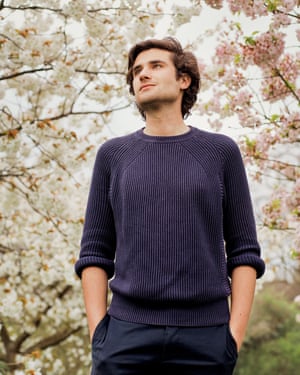
Alexander Hoyle, 25, is a horticultural hit on social media with 25k followers on Instagram. They are drawn to his daily updates from his day job as plantsman at the Royal Botanic Gardens, Kew, in London. His posts of roses, bluebells and the occasional peacock celebrate the traditional English garden in an intoxicating blend of blooms and borders.
Real life is not quite as rosy. “It’s an absolute nightmare for dating,” Hoyle says of his dedication to the role, “because you have to find someone who is like-minded. They have to love plants, and that can be tricky. Even though they think it’s romantic and wonderful, there’s the reality of having to look after the plants – and sometimes the plants come first.”
Hoyle’s love affair with the English garden dates back to a childhood spent in the Cotswolds. His late mother was a gardener, the family patch part of the National Garden Scheme. “It’s just there,” he says of the desire to dig. “You suddenly want to be outside, you have a sense of pride and ownership.” So he worked at a local nursery during school holidays and visited Chelsea with his grandparents. (“I was in awe,” he says.) He went to plant fairs, collected pelargoniums, and at 16, began studies in horticulture at Pershore College, Worcestershire.
It was Hoyle’s first gardening job, age 11 at a local 17th-century manor house, that settled the matter. “That got me going; at first it was mowing grass, clearing up fallen fruit and squashing lily beetles,” Hoyle says. “The vicar used to pay me 20p a beetle. I had small hands that caught them quickly.”
After completing his first horticultural course, Hoyle spent two years working at Aberglasney Gardens in Carmarthenshire, west Wales. The head gardener was Kew-trained and encouraged Hoyle to take up further study. He studied the Kew Diploma for three years before securing a permanent position there, helping to manage the Rose Garden, the Great Broad Walk Borders, Palm House pond and Victoria Gate entrance. These are some of Kew’s choicest spots, which Hoyle shows off to his online following.
Hoyle’s passion has taken him around the world. A tour of rose gardens in America included the White House, accessed through American gardening friends. He is preparing for a similar rose-centred tour of Australia and there is a book in the works.
He’s clearly set for big things, but for now, he says, the plan is to stay at Kew. “I consider myself a plantsman, finding solutions and working with designers,” he says. Just don’t describe any of this as a day job. “When I meet new people, they say, your job’s great. And I’m like, no, no that’s my life.”
Favourite plant Roses. They’re an essential part of the English garden.
Hates Bad pruning. When people hack trees or leave a plant that’s really suffering. A good cut is really important.
Next big thing Big borders; mixed borders where you plant trees, shrubs, bulbs, all together in one space.
YouTube’s young star
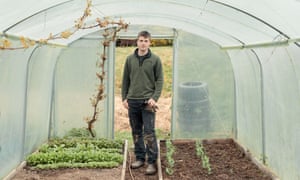
Huw Richards’ most popular Facebook post is a 60-second tutorial on how to grow vegetables, which has been viewed 6.6m times. “I was sharing a method of growing beans where you grow them in a rain gutter and slide them out into a raised bed,” says the 19-year-old. “People seemed to love that and it just completely blew up.”
His YouTube channel, Huw’s Nursery, shows how to grow organic produce at home for a fraction of the supermarket cost, with tips on picking hard-to-reach fruit (130k views), cheap soil nutrients (388k views), and growing potatoes the lazy way (1m views). The site has 82k subscribers.
Success has been some time in the making. Richards’ family live on an 11-acre holding near Aberystwyth in Wales, where from a young age he would help his father sow seeds in the vegetable garden. At 12, out of boredom, Richards started making videos. Not everyone was on board in the beginning. “My friends were like, ‘Why are you doing that? It’s so weird,’” he says. “Because stereotypically you’d see a teenage boy doing something [online] about gaming or sport.”
Richards built his social media profile while boarding on scholarship at Llandovery College. A head boy there, he gardened, filmed and edited in his spare time (he’s produced more than 400 videos). He was awarded a £5,000 grant to promote sustainable food, won a national young entrepreneur award and made £12,000 by his 18th birthday. He listens to the podcasts of entrepreneurial self-help guru Gary Vaynerchuk while in the garden. “Gary’s been the biggest influence in my life,” he says. “He’s very strategic and tries to push positivity. His mindset has really helped me develop.”
Despite getting three Bs in his A-levels, Richards did not apply to university but dedicates most of his time to Huw’s Nursery while working part-time teaching gardening at his former school. The long-term plan is the big time. “I’d love to be a gardening presenter because I think I’d appeal to a younger demographic,” Richards says. “The average age of gardening presenters and writers is a lot older than I am. I’ve been doing this all by myself. I’ve had 20m views online.”
Richards has met a number of production companies, a management agency and a publisher this year. But some opportunities he is minded to decline. “On my Facebook page, some older ladies wanted me to do a topless gardener calendar,” he laughs. “But I don’t think so.”
Favourite plant Rainbow chard. It’s colourful, and although it has a short shelf life, it’s a really productive green – the stems are delicious with a bit of butter.
Hates The low diversity of varieties in supermarkets. It makes people less excited about vegetables.
Next big thing Swede, because it makes a great alternative to mashed potatoes. It goes really well with stronger-flavoured foods and grows well in our climate.
The dynamic duo
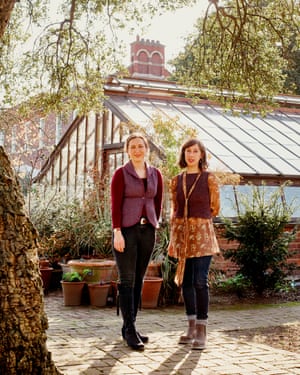
The powerful partnership of Tamara Bridge and Kate Savill, both 30, is rare in usually male-centric gardening circles. Both run individual, award-winning garden design practices, but also collaborate on show gardens. In 2017, they pooled their talents for a BBC Radio 2 Feel Good Garden at Chelsea; this year they are back to create an artisan garden for a craft gin company. “Architects work together in big practices so why should it be different with garden designers?” says Bristol-based Savill.
The pair met in competition at RHS Tatton Park flower show in 2015 where they were both up for Young Designer of the Year. Bridge won, and Savill was awarded a gold medal – not bad for her first show garden. The two hit it off when they spent three weeks living side by side in a camper van (Bridge) and a tent (Savill) at the show. “It started off just Tamara and me in a field, two girls cracking on for weeks,” says Savill.
Collaborating has been a great creative experience, says Bridge, whose practice is based in Norfolk. “Partnerships can be seen as quite a sparky relationship, but we are the opposite, we get calmer.” They consult each other on their individual projects and say working together only adds to the sum of the work, even if Savill tends to have the final tweak.
“Kate waits till I’ve gone off site,” Bridge laughs. “I get quite stressed about changing things on site so she’ll wait until I’ve gone and sneak in.” In her defence, Savill always makes her partner aware of the alterations.
For their Chelsea show, Bridge and Savill are heading a team of 22, which splits squarely on gender lines: the construction side is exclusively male, the planters mostly women. The construction team gets paid first and the planters only if budget allows. The women, therefore, tend to be volunteers. It’s accepted practice generally, say Bridge and Savill, but it’s beginning to get their goat. “Why is it acceptable for a project to run like that?” says Bridge. “The next time we do this it’s at the top of our list of things that won’t happen. It does make me quite cross.”
Favourite plant Bridge: I love a wild strawberry. Chives are great because the flower is edible and you can pull it off and sprinkle it on your salad for a spring onion taste.
Hates Bridge: bad lawn edges. I like a nice crisp edge with no tufty bits. If you have a flowerbed with an edge on the lawn, it needs to be neat and tidy.
Next big thing Savill: crazy paving is making a big wave at the moment.
The environmental estate gardener

Lachlan Rae is living the good life on a grand scale. The 25-year-old gardener lives in a cottage on the private Auchendolly estate, near Aberdeen in Scotland, with his wife and three young children, all under the age of six. “It’s a lovely big garden for me to take ownership of,” says Rae, who is originally from Dumfries. “You walk out of the door and you’re at your work. It’s a nice way to live.’
Working alone or with his wife, Sian, Rae insists on traditional horticultural practices where possible. “I like to think of myself as an arts and crafts gardener. There’s no automated watering, it’s all watering cans. Instead of using plastic canes everywhere, I cut hazel twigs up in the woods and use that for staking plants to keep the environmental footprint down.”
Rae left school at 16 and took seasonal work as a Christmas tree cutter and then a self-employed gardener, where his lack of expertise exasperated him. “People were asking me questions I couldn’t answer.” After taking a local gardening course he enrolled on the horticulture with plantsmanship course at the Royal Botanical Garden, Edinburgh. The academic grounding helped Rae win last year’s Young Horticulturalist of the Year, a national competition run by the Institute of Horticulture which tests the scholarly mettle of gardeners under 30 across categories that include horticultural science and practice plus plant, pest and weed identification.
These wider aspects of gardening often go overlooked, says Rae. “There’s a lot more to horticulture than just gardening; there’s a lot of science and it’s artistic,” he says. ‘I don’t know that the message is out there about the range of jobs. Gardening is just seen as pushing a wheelbarrow about all day. Schools are at fault; it’s seen as a career for the no-hopers.”
Rae moves to a new role this month as head gardener on Wiston Estate, in West Sussex. He will be in charge of a four-person team, all under 25, that will maintain 17 acres of public gardens. “It’s just what I need, a new challenge.”
Favourite plant Cercidiphyllum japonicum, also known as the katsura tree. It’s not a beauty but it has small flowers which come out en masse in a faint ripple of colour.
Hates Plastic green string you get in garden centres. It’s horrible. I prefer jute twine, which is a bit more rustic and natural.
Grow now Plants with purpose like cut-and-come again salads, which can be grown on windowsills.
The poet gardener
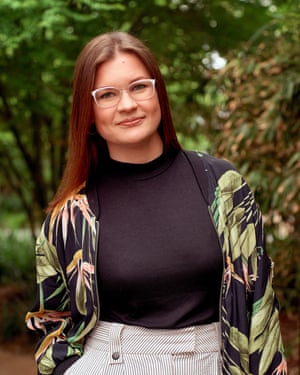
Ula Maria Bujauskaite’s gardens are infused with ideas about time, memory, connections. Stepping into one should feel like a holiday from life. “When I design someone’s garden, it’s important to look at what inspires them and what kind of environment they feel happiest in,” says the 25-year-old RHS Young Designer of the Year 2017. “People draw from their experiences of being on holiday or from their childhood, time spent in nature. A lot of my work is an interpretation of that happy place in the garden.”
Bujauskaite’s award-winning garden, Studio Unwired – shown at last year’s RHS Tatton Park flower show – drew inspiration from her own happy place, the Baltic coastline of her childhood. She created an outdoor working space informed by the earthy, serene summers of the Lithuanian seaside.
Bujauskaite knew from childhood that she wanted to pursue design. She attended the Fine Arts School in Lithuania from age 12 until her family moved to Northampton in 2008, and she took a 3D design course in Milton Keynes followed by one in Landscape Architecture at Birmingham City University. There she was awarded the Landscape Institute’s John Knight award twice, for degree and master’s projects.
The personal connections in Bujauskaite’s work first surfaced here; her master’s explored the benefits of garden spaces for patients in palliative care. “I was 17 when my mum passed away from cancer. I had to spend a lot of time in a hospice with her and I wished there was a garden to walk out into and just spend some time in,” she says. The therapeutic aspects of colour, texture and how a garden view can offer relief to patients are elements Bujauskaite would like to touch on again in future work. “A garden can change people’s experience of going through something sad or horrible,” she says.
Bujauskaite, who combines her own work with freelancing for other studios and illustration, is preparing a Lifestyle garden for this year’s RHS Hampton Court Palace flower show – a new category for female designers under 30, to mark 100 years since women won the right to vote. “It’s amazing now that we [women] get encouraged to be in the construction and design industries,” she says. “Sometimes approaching the build managers and contractors could be quite a daunting experience. So when you’re being spoken of or heard of, people feel like they have more trust in you.”
Favourite plant Grasses: at sales, people pick the bright colours and all the grasses are left behind, which I love most.
Grow now If you live in a flat, grow herbs like rosemary or mint or anything flowering that would enliven the space.
Next big thing Wabi-sabi, from Japanese culture, is seeing beauty in imperfection. The cracks in timber or paving can be beautiful, too, because they show the ageing or time passing by.
The fresh face of landscape gardening
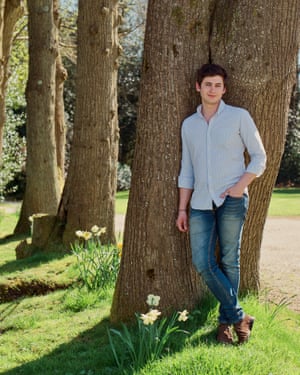
Will Williams, 22, had a rude awakening to gardening. At 16, having left school, he got a job with a local landscape gardener in Sussex. The 5.30am start and 12-hour working days were a steep learning curve. “It matured me very quickly,” he says. “I remember a lorry dumped four tonnes of sand at the front of a terraced house. I was passed a spade and a bucket and told to get all the sand round the back. That was a long day.”
He has advanced remarkably quickly since. His passion for gardening deepening, he took a local course near his family home in Sussex. At 18, having saved half the fees, with the remainder paid by his parents, Williams became the youngest diploma student at London College of Garden Design. He went it alone after graduating, specialising in residential garden design, freelancing for his “bread and butter”, then winning projects against industry veterans. “I had nothing to risk, and in five years’ time I probably would have, so it was the perfect time to show the industry what I’ve got at quite an early age by myself,” Williams says.
Show gardens helped Williams’ star rise. A triple RHS gold medallist, his 2016 garden at Hampton Court Palace flower show celebrated the South Downs with flint sculptures, Sussex clay bricks and the local round-headed rampion flower. He returned to Hampton Court in 2017 with a markedly different project; a large-scale reproduction of the natural defences installed in the flood blackspot of Pickering in Yorkshire. “It was [about] how protection can work in some locations around the UK,” he says. “It costs a lot less, is more aesthetically pleasing and is less damaging to the environment.”
Williams’ next show sees him up for the RHS Young Designer of the Year 2018 (the winners are announced in July). At One is a show garden about balance, pleasing to humans and attractive to bees, butterflies and bugs. His ultimate ambition is a main avenue garden at Chelsea flower show. And while he is still young (a landscaper once refused to work with him because he looked so fresh-faced), Williams believes starting so early has been to his advantage. “Lots of people are career changers so they might not have as much experience as I do,” he says. “This is all I have really known from the age of 16. My youth hasn’t stopped me yet.”
Favourite plant The amelanchier tree. It has an architectural value throughout the seasons, beautiful white flowers in spring, deep reds in autumn.
Grow now Herbs, chillis and edibles. Things you can use in cooking daily.
Next big thing Indoor gardening. I’ve seen (prototype) vertical bookcases with a massive vegetable garden like a fridge, with all the light you need to grow indoors.
• Commenting on this piece? If you would like your comment to be considered for inclusion on Weekend magazine’s letters page in print, please email weekend@theguardian.com, including your name and address (not for publication).